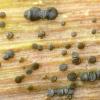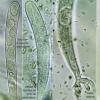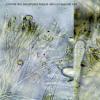
14-11-2025 16:26
 Marian Jagers
Marian Jagers
Hello everyone, On dead wood of Cytisus scoparius

14-11-2025 18:31
 Lothar Krieglsteiner
Lothar Krieglsteiner
Hello,can somebody provide me with a file of:Rothe

12-11-2025 09:25
 Viktorie Halasu
Viktorie Halasu
Hello, I need help with a pale terrestric Pseudom

11-11-2025 20:16
Bohan JiaHi, lastly I have found these tiny yellow decayin

09-11-2025 13:20
Hello.A tiny ascomycete, appearing as erupting gra

08-11-2025 00:29
 Francois Guay
Francois Guay
I found this species in Quebec, Canada, on herbace
Patellaria atrata ou Claussenomyces atrovirens ??
Bernard CLESSE,
09-02-2020 20:39
 Sur tronc mort et décortiqué de chêne en ambiance humide.
Sur tronc mort et décortiqué de chêne en ambiance humide. Je pensais à Patellaria atrata mais Raul Tena Lahoz propose Claussenomyces atrovirens, que je ne connaissais pas.
Pourriez-vous donner votre avis et me dire quelle est la différence entre ces deux taxons ?
Grand merci d'avance !
Bernard
Hans-Otto Baral,
09-02-2020 20:45

Re : Patellaria atrata ou Claussenomyces atrovirens ??
Thsi difference is huge: Patellaria forms septate spores with a high oil content that are ejected as such. Clauss. atrovirens and related species forms septate spores with low oil content (see your photo) and these spores germinate inside the immature asci to form numerous minute conidia. The conidia aggregate in balls, see your photo. The balls are ejected. Some conidia are floating in your preparation. they are rod-shaped and also the possible absence of longisepta in the ascospores (only cross-septa) point against atrovirens.
A difficult genus with some undescribed species. Look in my folde and compare e.g. C. munathinus and C. xylophilus.
The genus stands in the Phacidiales, Tympanidaceae.
Raúl Tena Lahoz,
09-02-2020 20:59

Re : Patellaria atrata ou Claussenomyces atrovirens ??
In fact, my anwser to Bernard was to draw his attention to Claussenomyces... I didn't try to get deeper in this difficult genus.
Cheers,
Raúl
Cheers,
Raúl
Bernard CLESSE,
09-02-2020 21:22

Re : Patellaria atrata ou Claussenomyces atrovirens ??
Great thanks Peter, Raul and Zotto !!
I learned a lot of new things again! What an extraordinary forum!
And sorry to have generated two discussions instead of one (a handling error!)
Bernard


